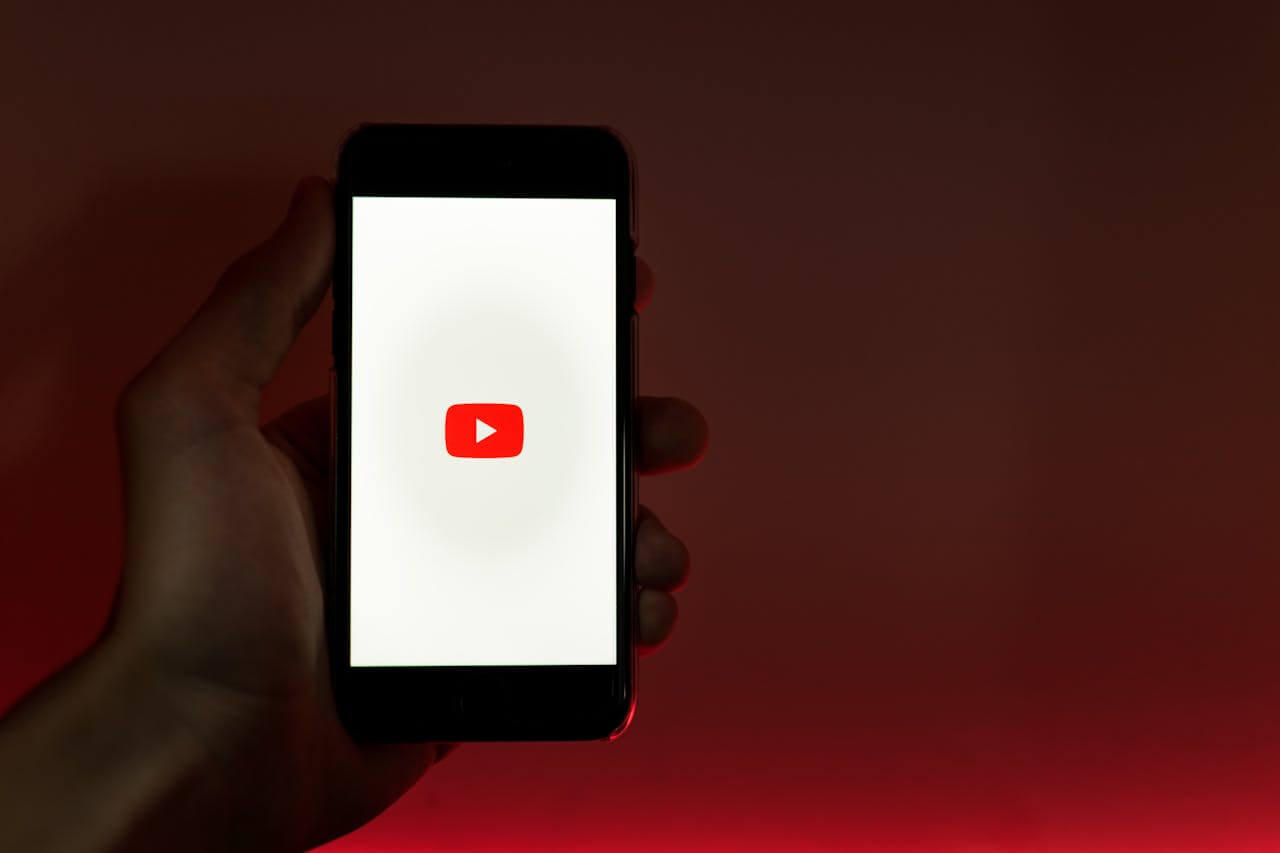Let’s be real—making money on YouTube sounds like a dream, right?
You record videos in your room, upload them, and suddenly the dollars start rolling in. At least, that’s the fantasy.
The truth? It can happen—but not overnight. YouTube monetization is a real, viable path to income (even full-time income), but it takes strategy, consistency, and a solid understanding of how YouTube’s system works.
Whether you’re just starting out or have been uploading for a while and wondering “How do I turn this into actual money?”, this guide breaks it all down for you—step by step.

🧠 What Is YouTube Monetization (And Why Should You Care)?
YouTube monetization is the process of earning money from your videos. Simple enough.
Once your channel meets certain requirements, you can apply to the YouTube Partner Program (YPP). If accepted, you can start making money from:
- Ads
- Memberships
- Super Chats
- Merch
- Premium views
- …and more
It’s not just about throwing content online and hoping for the best. Think of your channel as a digital storefront—your videos are the products, and monetization is your business model.
✅ Are You Eligible to Monetize?
Before YouTube hands you a paycheck, you need to prove you’re serious. Here’s what they require in 2025:
YouTube Partner Program (YPP) Requirements:
- 1,000 subscribers
- 4,000 public watch hours in the past 12 months
OR
10 million YouTube Shorts views in the last 90 days - No Community Guideline strikes
- 2-Step Verification enabled
- Live in a YPP-supported country
- Have an AdSense account linked
Once you hit those numbers, you can apply through YouTube Studio. YouTube then reviews your channel to make sure your content is original, advertiser-friendly, and policy-compliant.
⚠️ Tip: Don’t try to cheat the system with sub4sub schemes or botted watch time. YouTube’s detection tools are smarter than ever.
💸 How Do You Actually Make Money on YouTube?
Great question. Once you’re in the YPP, there are several income streams available to you. Some you’ve probably heard of—others might surprise you.
1. Ad Revenue
This is the classic route. YouTube runs ads on your videos, and you get a share (usually 55%).
Types of ads:
- Skippable video ads
- Non-skippable ads
- Display ads
- Mid-roll ads (on 8+ minute videos)
- Shorts ads (pooled revenue)
🧠 Pro tip: The more engaged your viewers are (watch time, comments, likes), the more likely YouTube is to serve ads on your content.
2. Channel Memberships
Once you have 1,000+ subscribers, you can offer paid perks—like exclusive content, loyalty badges, and member-only livestreams. Think of it like Patreon—but built right into your channel.
3. Super Chat & Super Stickers
Live stream often? Viewers can pay to pin their comments or send fun stickers during your streams. It’s a great way to interact and earn at the same time.
4. YouTube Premium Revenue
When Premium subscribers watch your content ad-free, you still get paid. YouTube splits a portion of their monthly fee with you—based on watch time.
5. Merch Shelf
If you’ve got custom products (shirts, mugs, digital goods), you can showcase them right under your videos. You’ll need 1,000 subs and an approved store (like Spring, formerly Teespring).
6. Brand Deals & Affiliate Links (Outside the YPP)
This is where the big bucks often come in. You can promote products in your videos, and earn from affiliate commissions or sponsored content.
📌 Important: Always disclose paid promotions. It’s not just ethical—it’s legally required in many countries.
💡 CPM, RPM, and How Much YouTubers Actually Earn
Let’s bust the myth right now: Not every YouTuber is raking in thousands. In fact, most make less than you think—especially in the early stages.
Here’s the breakdown:
- CPM (Cost Per Mille) = What advertisers pay per 1,000 ad views.
- RPM (Revenue Per Mille) = What YOU earn per 1,000 views after YouTube’s cut.
RPM depends on your niche, audience location, and engagement. Here’s an estimate:
| Niche | Average RPM (USD) |
|---|---|
| Finance & investing | $12 – $25 |
| Tech Reviews | $6 – $12 |
| Education | $4 – $8 |
| Gaming | $2 – $6 |
| Vlogs/Entertainment | $1 – $4 |
So, if you have 50,000 views per month with a $5 RPM, you’re making about $250/month from ads. That’s why smart creators diversify their income streams.
🔒 YouTube’s Monetization Rules: What Not to Do
YouTube doesn’t just want entertaining content—they want safe, original, and ad-friendly content.
Avoid These:
- Reused content (TV clips, reuploads)
- Excessive profanity or violent themes
- Copyrighted music or footage
- Misleading thumbnails or titles
🧠 Use royalty-free music (like YouTube’s Audio Library), always add commentary to reused content, and follow the Community Guidelines like your income depends on it—because it does.
🏆 Smart Tips for Growing Faster and Earning More
Here’s where real strategy kicks in. If you want to go from hobbyist to serious creator, these tips are gold:
1. Create Longer Videos (8+ Minutes)
Why? Because it unlocks mid-roll ads, boosting ad revenue.
2. Focus on Watch Time
YouTube loves videos people actually watch. Hook viewers in the first 15 seconds, and keep them engaged.
3. Niche Down to Stand Out
Don’t be “a little bit of everything.” Start with a clear niche—finance, travel, tutorials, fitness, whatever—and become that creator people go to.
4. Optimize for Search (YouTube SEO)
Use targeted titles, thumbnails, and descriptions. Include relevant keywords naturally—but don’t keyword-stuff.
5. Build Community, Not Just Views
Respond to comments. Ask questions. Show your face. Viewers who feel connected are more likely to subscribe, join, donate, and buy.
🧭 Final Thoughts: Is YouTube Monetization Worth It?
Here’s the truth: Yes—but only if you treat it like a business.
You won’t get rich overnight, and it’s not “easy money.” But if you:
- Stick to a niche
- Provide value
- Engage your audience
- Follow the rules
- Keep showing up…
…then you’re setting yourself up for long-term success.
Whether you want to make a side income, quit your 9–5, or just build something meaningful, YouTube offers one of the best platforms to do it—and monetization is the gateway.
📌 TL;DR – Key Takeaways
- You need 1,000 subs + 4,000 watch hours (or 10M Shorts views) to apply for monetization.
- Income comes from ads, memberships, merch, Premium views, and more.
- Focus on original, high-retention content and stay consistent.
- Avoid copyright issues and misleading practices—YouTube watches everything.
- Diversify your income—don’t rely on ads alone.
🤔 FAQ: Quick Answers for Curious Creators
Q: How long does it take to get monetized?
A: It varies. Some creators hit 1,000 subs in a few months, others take years. Focus on quality + consistency.
Q: Can I monetize Shorts?
A: Yes! You need 10 million public Shorts views in the past 90 days. YouTube shares pooled ad revenue for Shorts.
Q: What happens if I drop below 1,000 subs or 4,000 hours?
A: You’re not immediately kicked out of the YPP, but YouTube may review your account. Stay active and consistent.
Q: Can I make money without ads?
A: Absolutely. Sponsors, affiliate links, merch, and memberships often earn more than ads.

